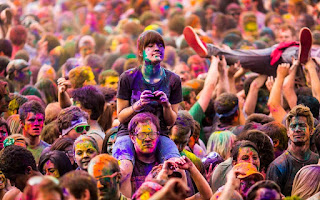Perfumes among the Pharaohs: Secrets of Beauty and Sanctity
introduction
Perfumes played an important role not only as an appearance of the Pharaonic civilization, but also as the essence of it, a pillar of worship for its people, and a source of attraction that defined their personalities, both outwardly and inwardly. Perfumes have always been an important part of ancient Egyptian civilization, used not only for beautification, but also for religious and funerary rituals and even medicine. The ancient Egyptians were among the first peoples to master the art of perfume composition, to the point that perfumes became a symbol of civilization, luxury, and spirituality in Pharaonic Egypt.
The statesmen used perfumes extracted from olive oil, almond oil, and heglig oil, while the common people made their perfumes from castor oil.
caring to personal hygiene and beautification was a hallmark of the ancient Egyptians. Men and women would use aromatic oils after bathing to soften the skin and perfume the body. Priests, in particular, perfumed themselves daily as part of their purification rituals, and some perfumes are believed to have been reserved for royalty and nobility.
Natural ingredients of Pharaonic perfumes
Natural ingredients of Pharaonic perfumes
Frankincense and myrrh
Ginger and cinnamon
sandalwood
vegetable oils
Such as lotus oil, castor oil, and jojoba oil.
They imported some of these materials from distant countries such as the land of Punt (present-day Somalia), the land of Canaan, and India.
The most famous pharaonic perfumes
One of the most famous perfumes known in ancient Egypt was "Kyphi," a complex aromatic blend of more than 16 ingredients used as incense in temples and as a medicinal treatment. It was carefully prepared according to precise recipes, accompanied by religious hymns.
Perfumes in religious rituals
Perfumes played an important role in worship and rituals. Temples were fumigated with frankincense and myrrh as offerings to the gods. Priests applied perfumes to sacred statues, and aromatic oils were used to anoint the bodies of the dead during mummification, believed to purify the body and aid the soul on its journey to the afterlife.
beings, imbued with the divine essence, and the Egyptians considered perfume the sweet of the god Ra.
. Some deities were specially linked to perfume, one of the most important being Nefertem, god of perfume and of the primordial fragrant blue lotus flower.
Incense was to the Egyptians the ‘eye of Horus’, burnt as an offering to the gods in temples.
Since the Egyptians believed that the soul ascends to heaven, they used perfumes during the mummification process, which took from 40 to 70 days to complete. They used ground myrrh, Chinese cinnamon, and other perfumes in the mummification process.
They placed gold-plated vessels and jars made of fine pottery and white agate filled with aromatic substances in the graves, to keep the skin of their dead as soft as silk in the afterlife.
Similar vessels and bottles were also found in the tomb of Queen Hetepheres. The same was true of the beautiful Egyptian Nefertiti, who surrounded herself with perfume.
The perfume industry and its economic position
Perfume making was a prestigious profession, practiced by priests or specialists in the art of phytochemistry. Perfumes were stored in decorated pottery or glass bottles. Many of these bottles have been found in the tombs of kings and queens, attesting to their great value.
The status of perfumes in Pharaonic society
Perfumes were not merely luxury items; they were part of social and religious identity, used in marriage, royal occasions, mummification, and daily rituals. This culture extended to influence other civilizations, such as the Greek and Roman.
The statesmen used perfumes extracted from olive oil, almond oil, and heglig oil, while the common people made their perfumes from castor oil.
When Queen Hatshepsut ascended the throne of Egypt, she sent expeditions in search of incense and other precious commodities. Incense firmly established itself as a staple of religious rituals in temples and in the palaces of rulers and the wealthy.
One of the most famous perfumes known in ancient Egypt was "Kyphi," a complex aromatic blend of more than 16 ingredients used as incense in temples and as a medicinal treatment. It was carefully prepared according to precise recipes, accompanied by religious hymns.
One of the most famous perfumes known in ancient Egypt was "Kyphi," a complex aromatic blend of more than 16 ingredients used as incense in temples and as a medicinal treatment. It was carefully prepared according to precise recipes, accompanied by religious hymns.
conclusion
Perfumes in the Pharaonic civilization reveal an advanced understanding of beauty, nature, and spirituality, where art blended with faith, and scent became a means of drawing closer to the gods and maintaining physical and spiritual purity. Some of their recipes continue to inspire perfumers today, evidence of an enduring aromatic legacy.








(3).png)
